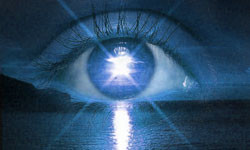Skywalker, a forum member, posted a link to this video in 2012 of a pro soccer (or football, for non-Americans) player’s eye movements being tracked by a device. Look at how his movements differ from the man named Andy, who, by the way, wears glasses. Coincidence?
I would bet that if you did similar experiments even only among top athletes, the ones with myopia would exhibit the same relative lack of eye movement as Andy. Andy’s eye movements are really not that bad. He isn’t staring at one spot. But compared to Cristiano, he sort of is. And I would bet that the experiments would yield similar results whether the myopic person wore glasses, contacts, or nothing.
Of course, I’m not being bold by making such an assertion. It’s not my idea. It’s just based on the principles that Bates discovered, among them the way people with defective vision have less free eye movement, and that the lack of movement isn’t just a symptom of blurry vision but a contributing cause of the blurry vision.
get help on our Facebook Group!

I founded iblindness.org in 2002 as I began reading books on the Bates Method and became interested in vision improvement. I believe that everyone who is motivated can identify the roots of their vision problems and apply behavioral changes to solve them.

Like the video. Here’s some old fashioned and new eyecharts.